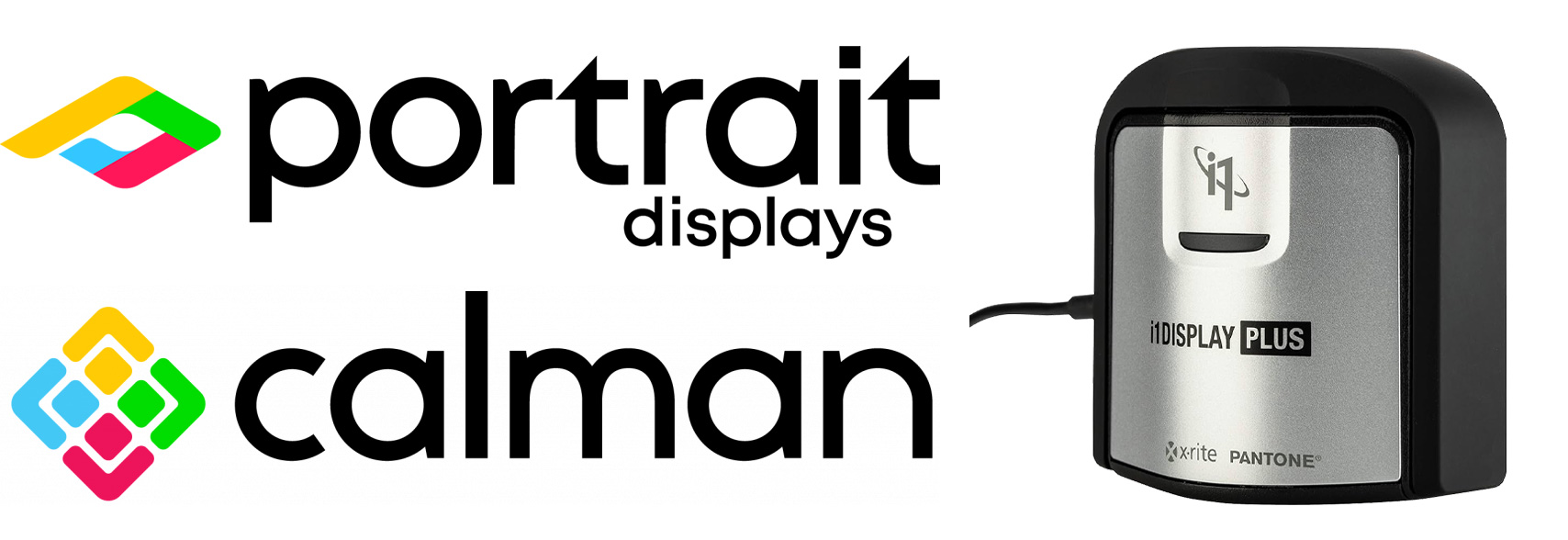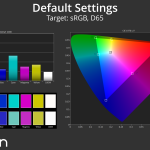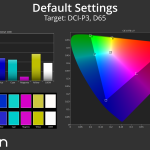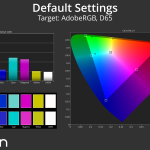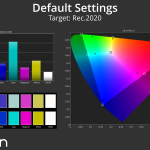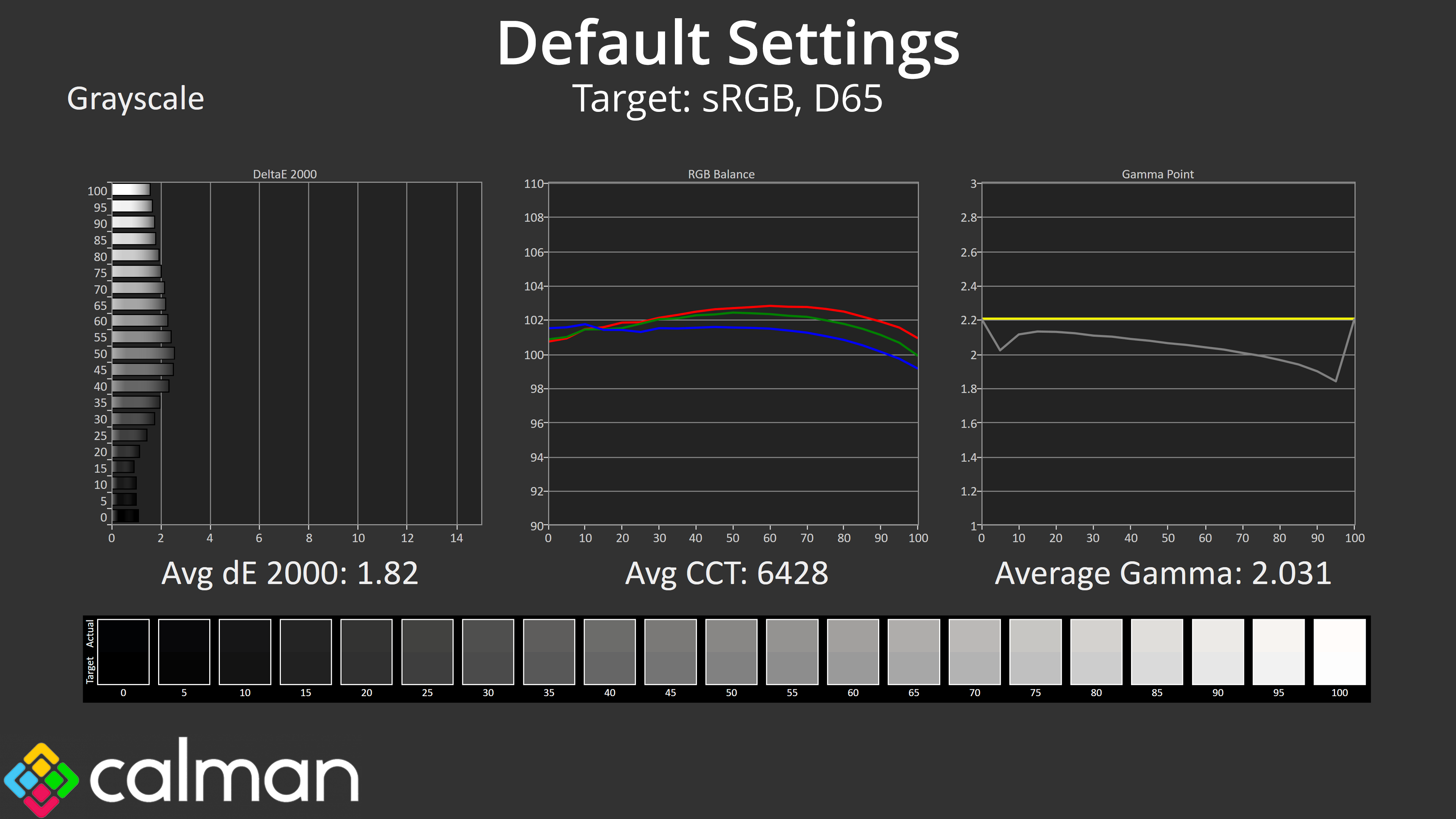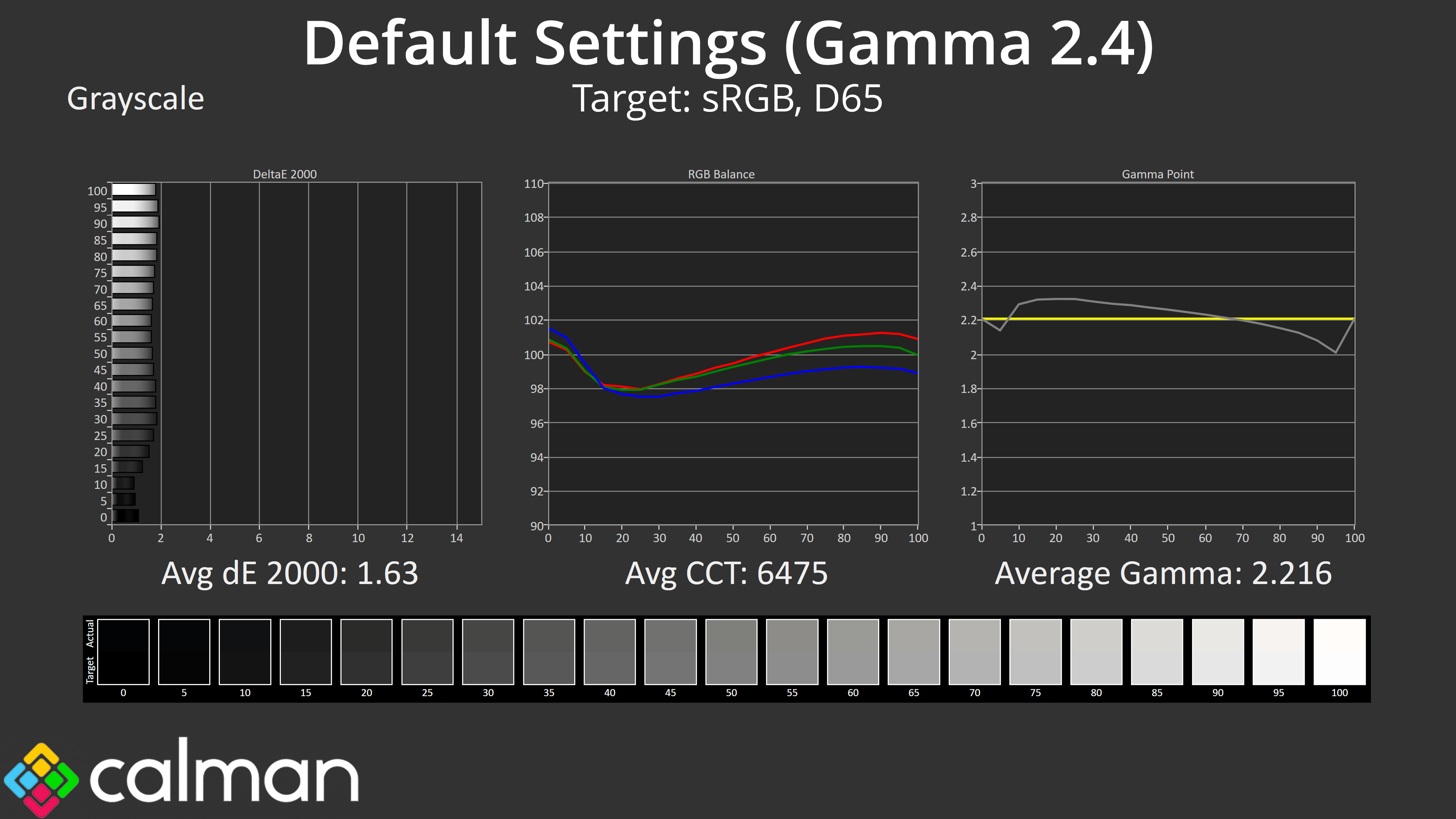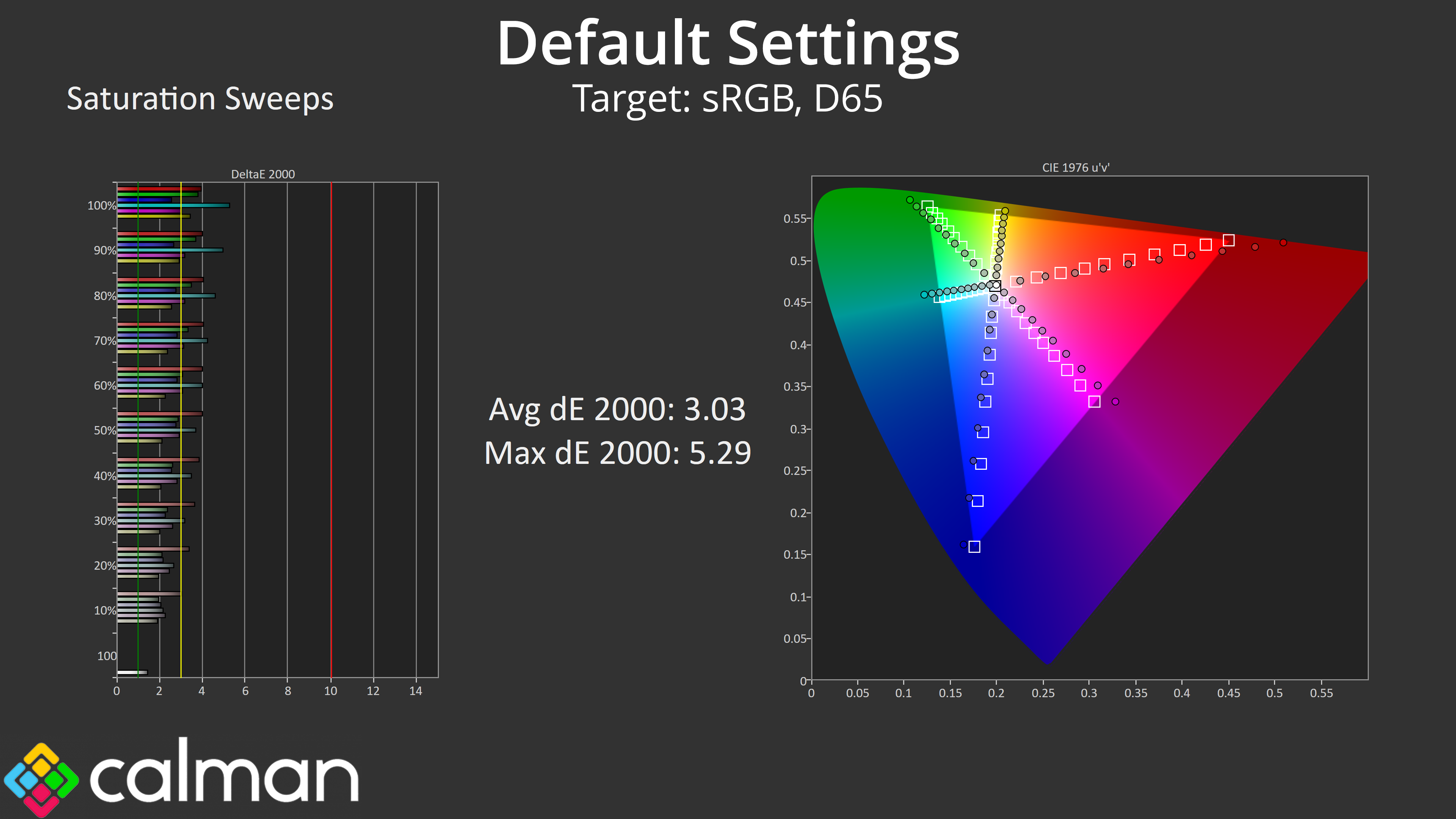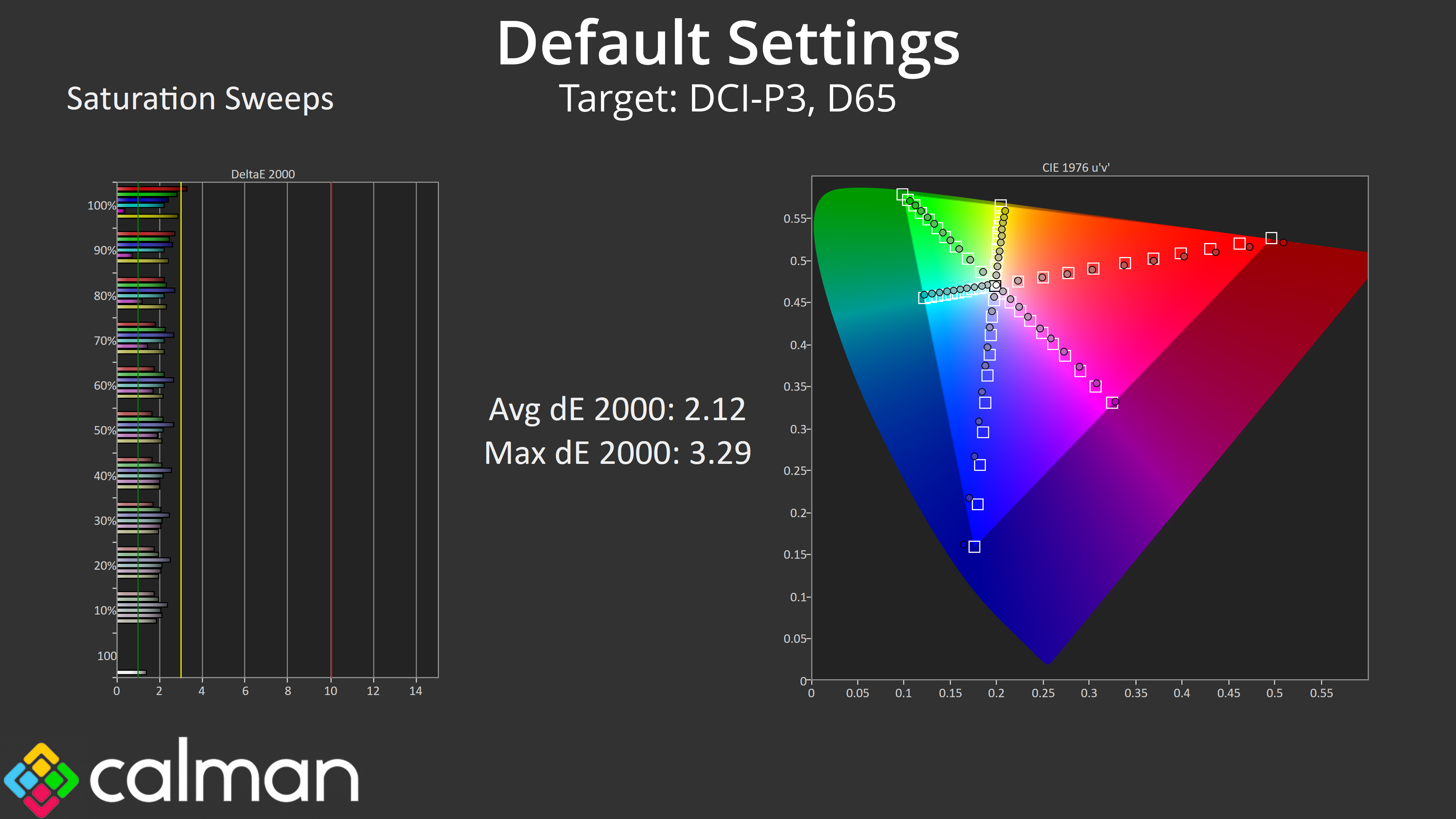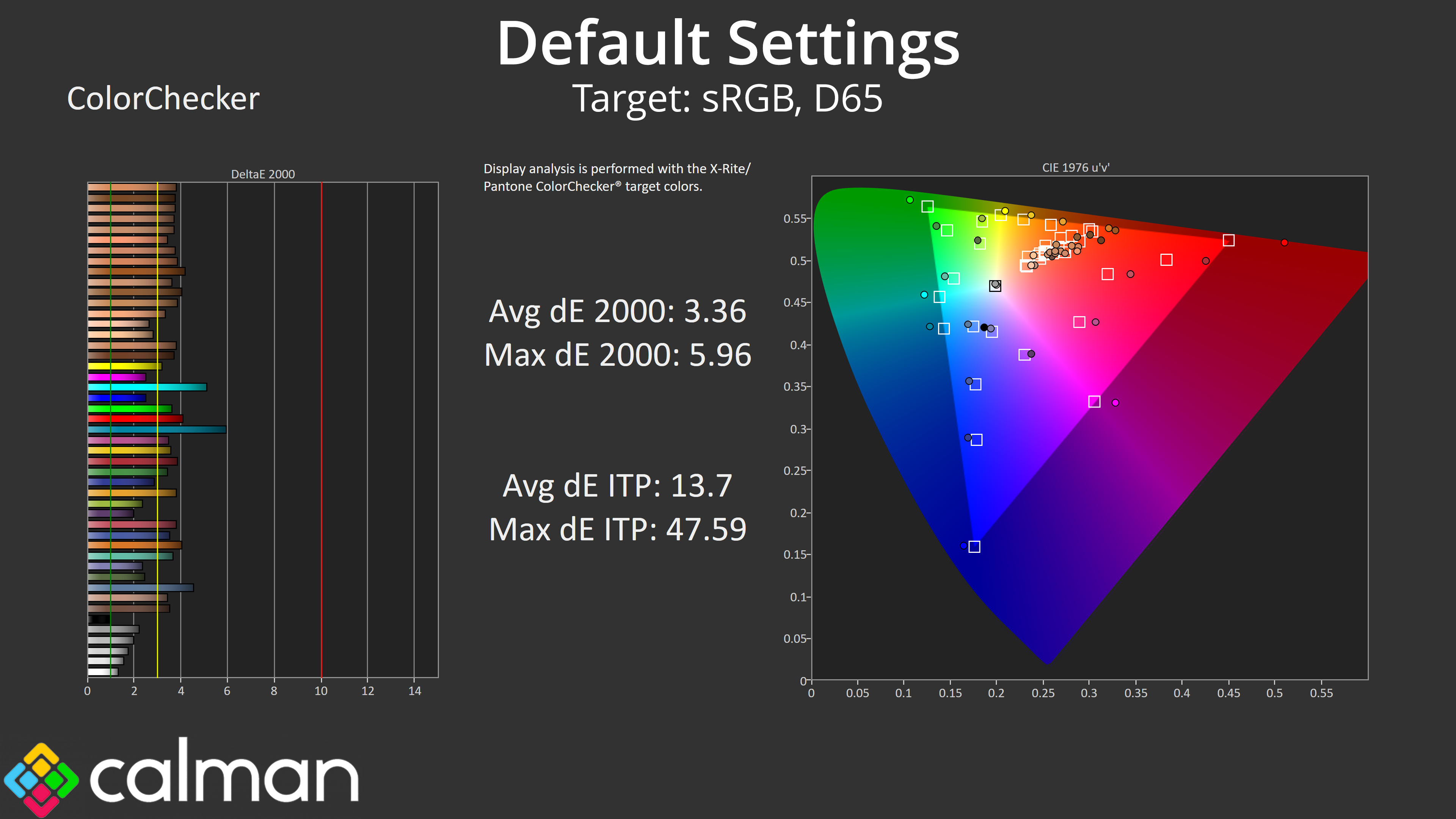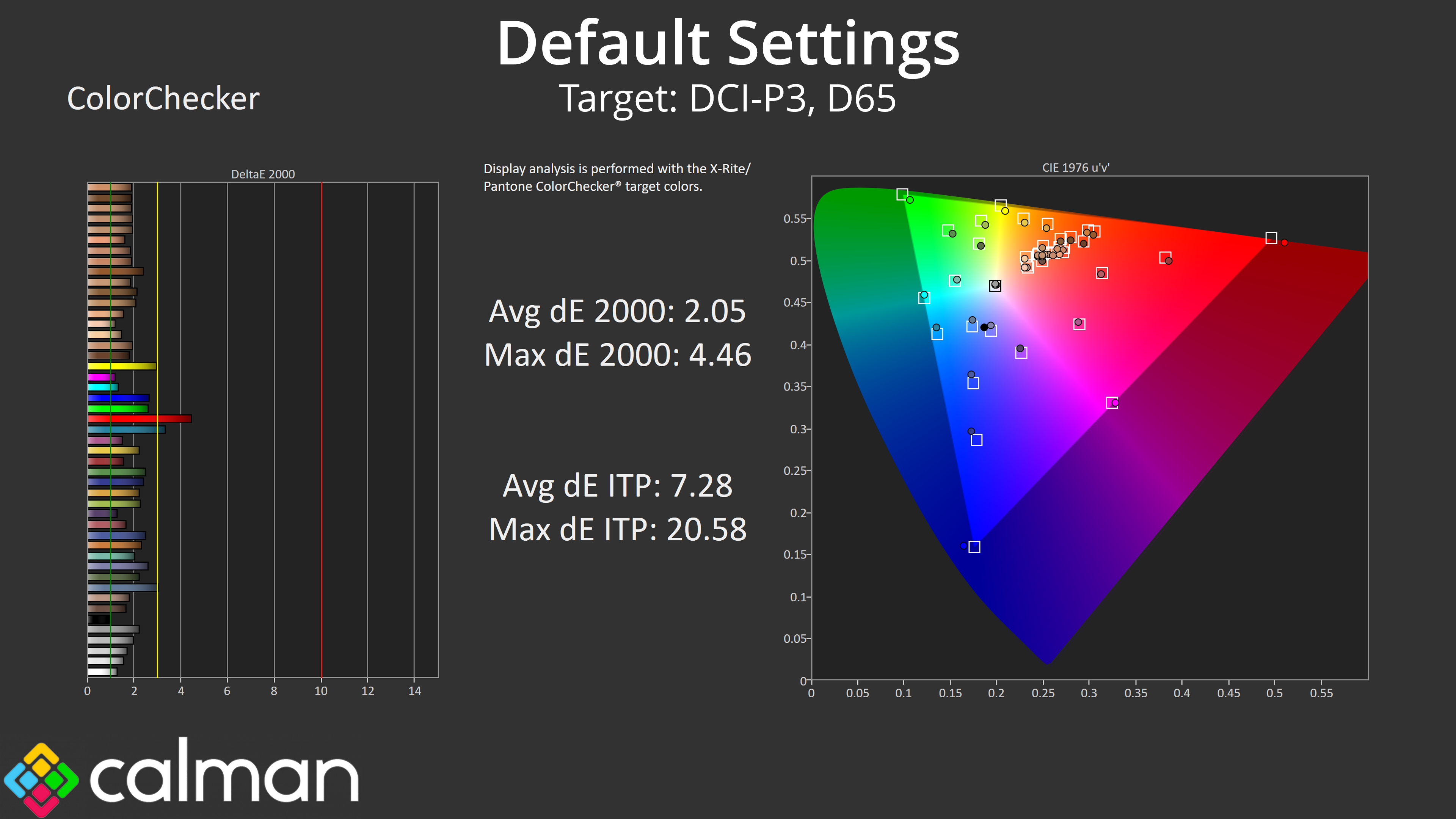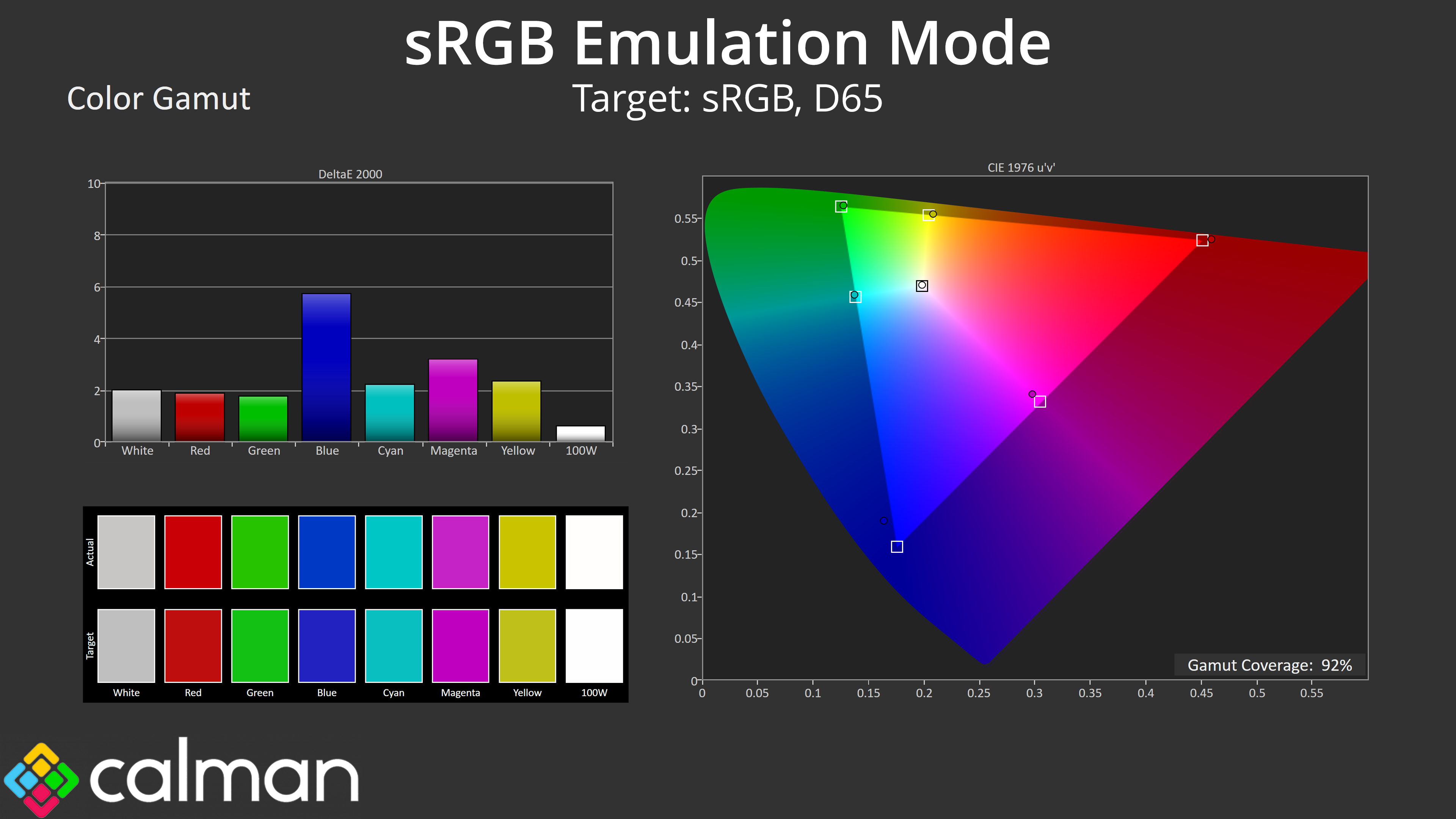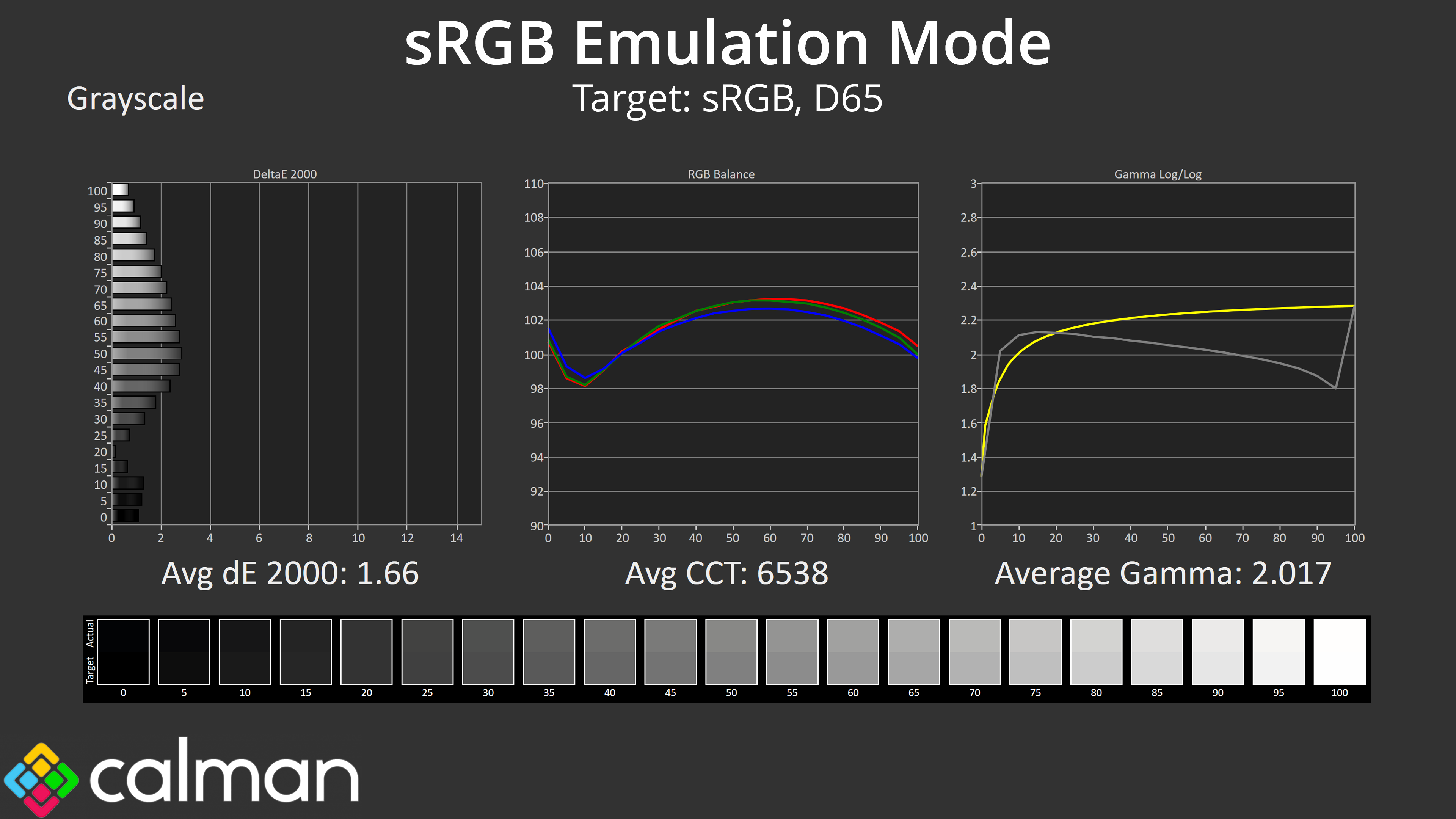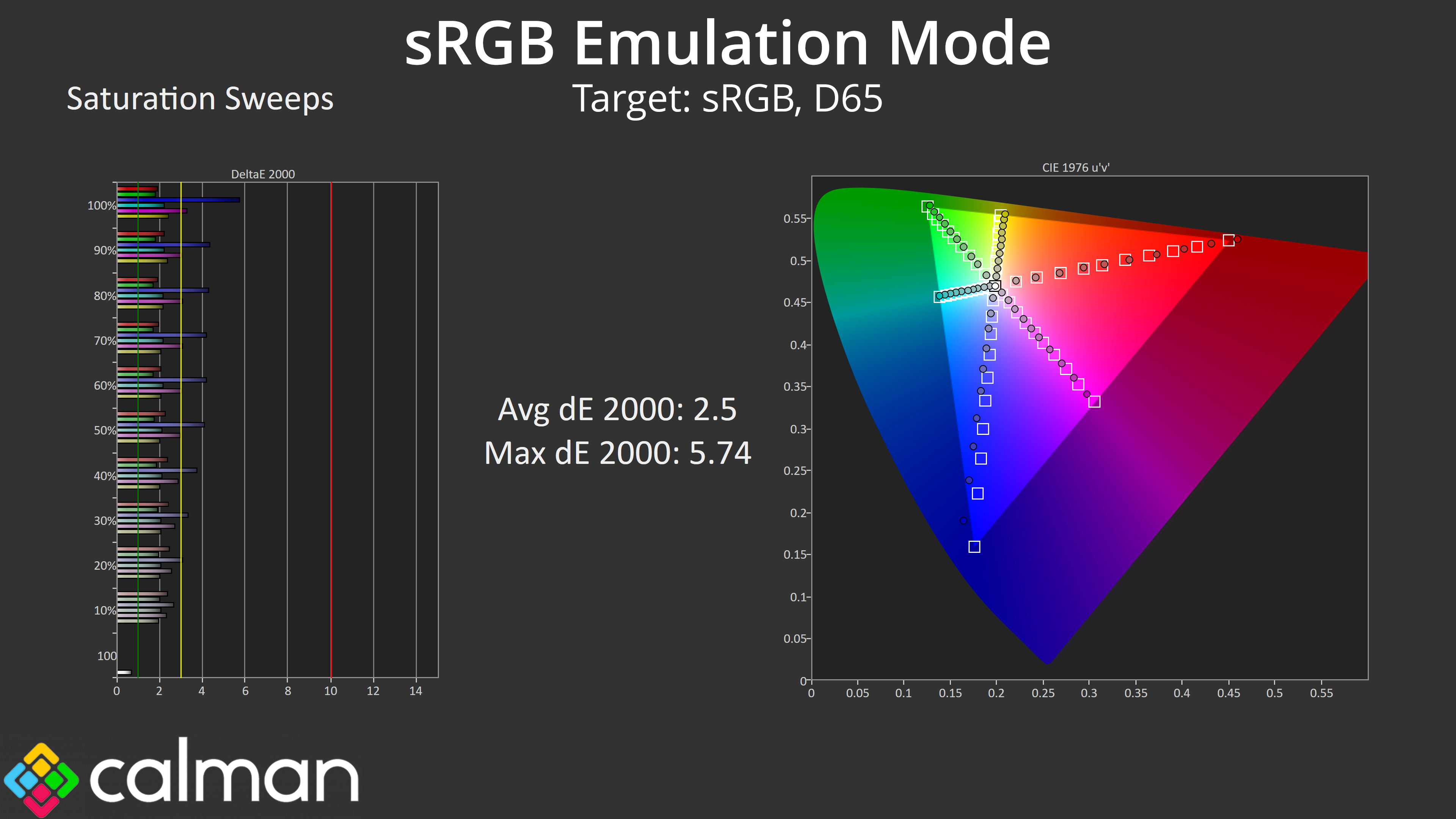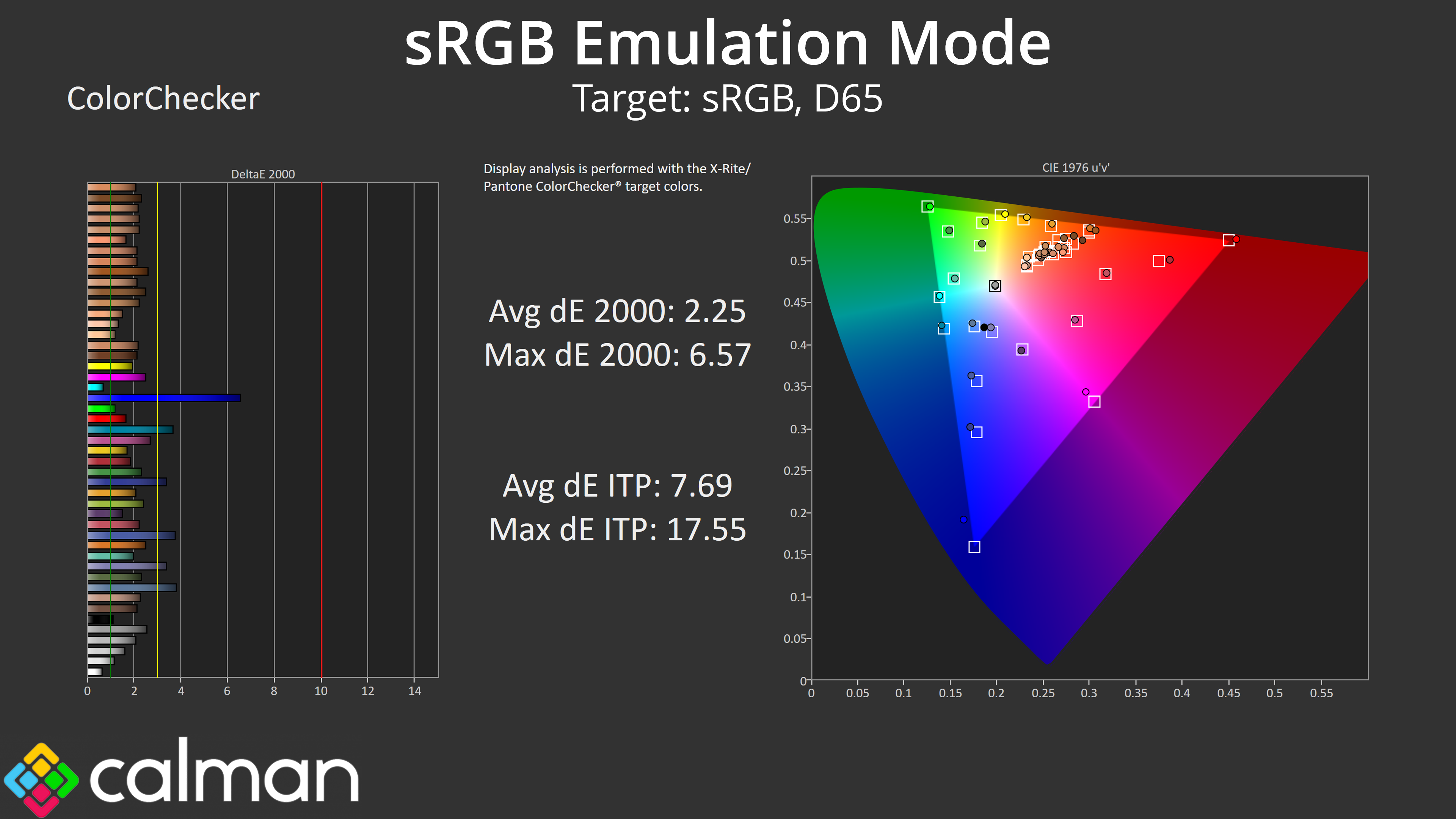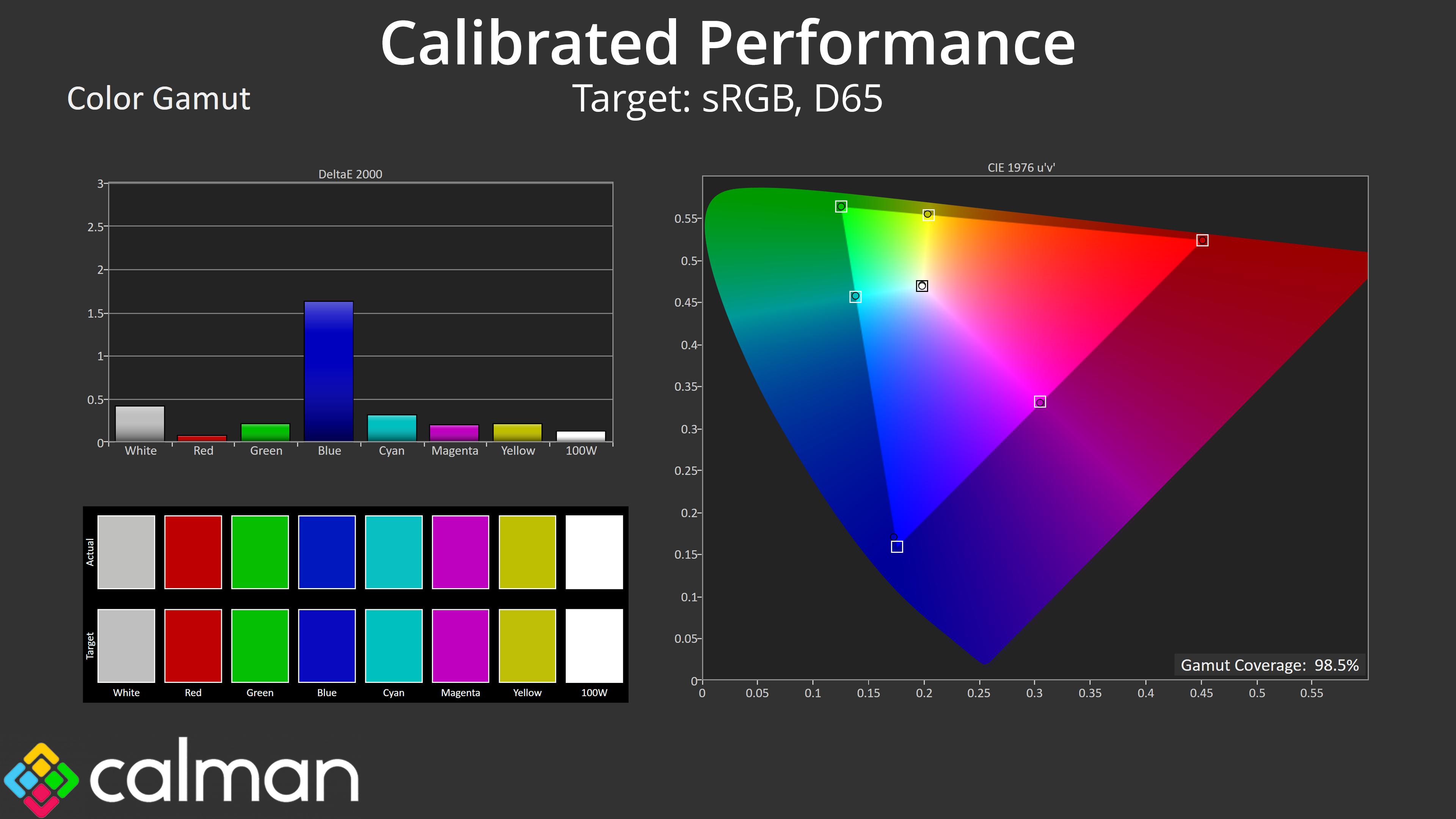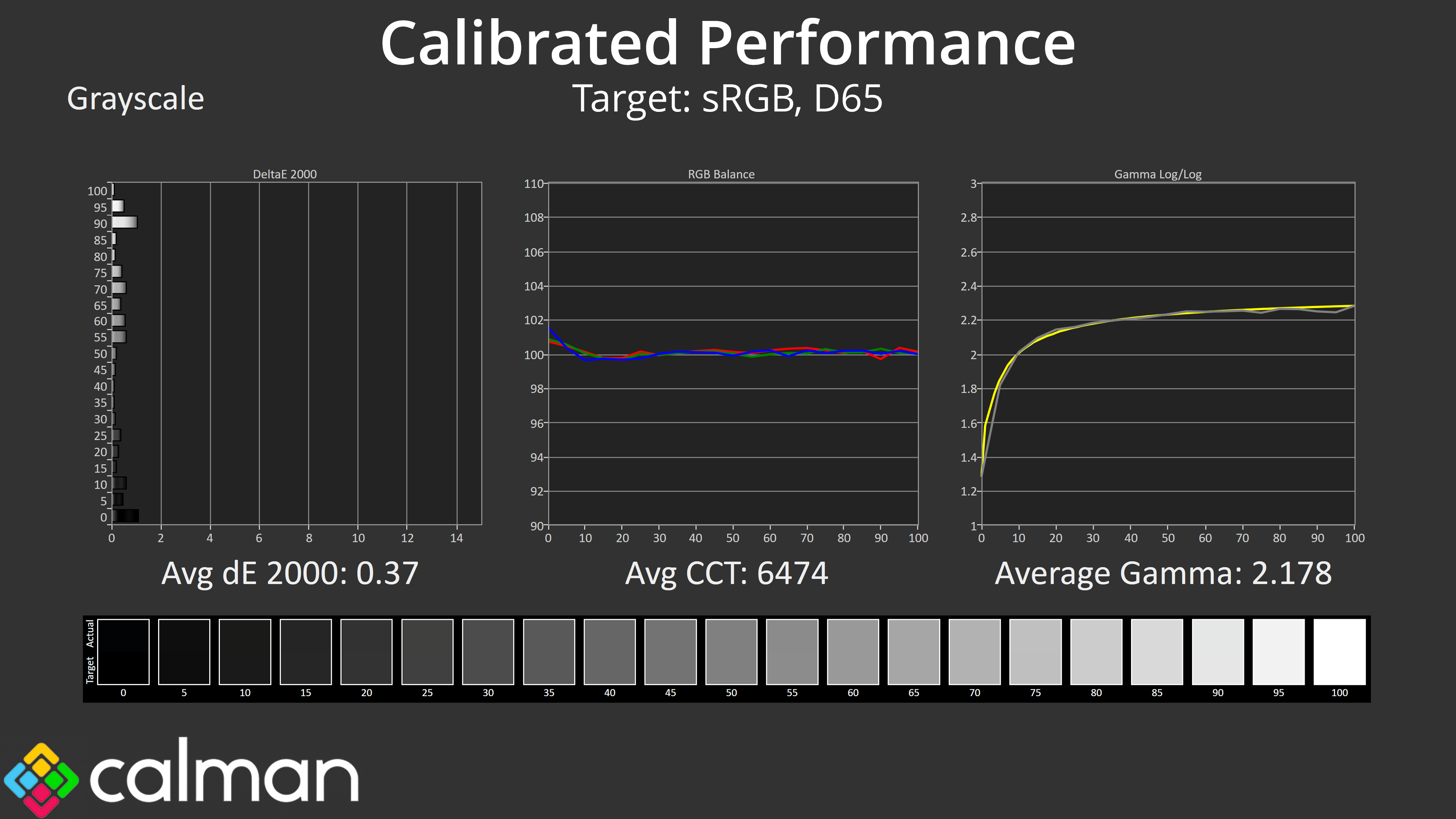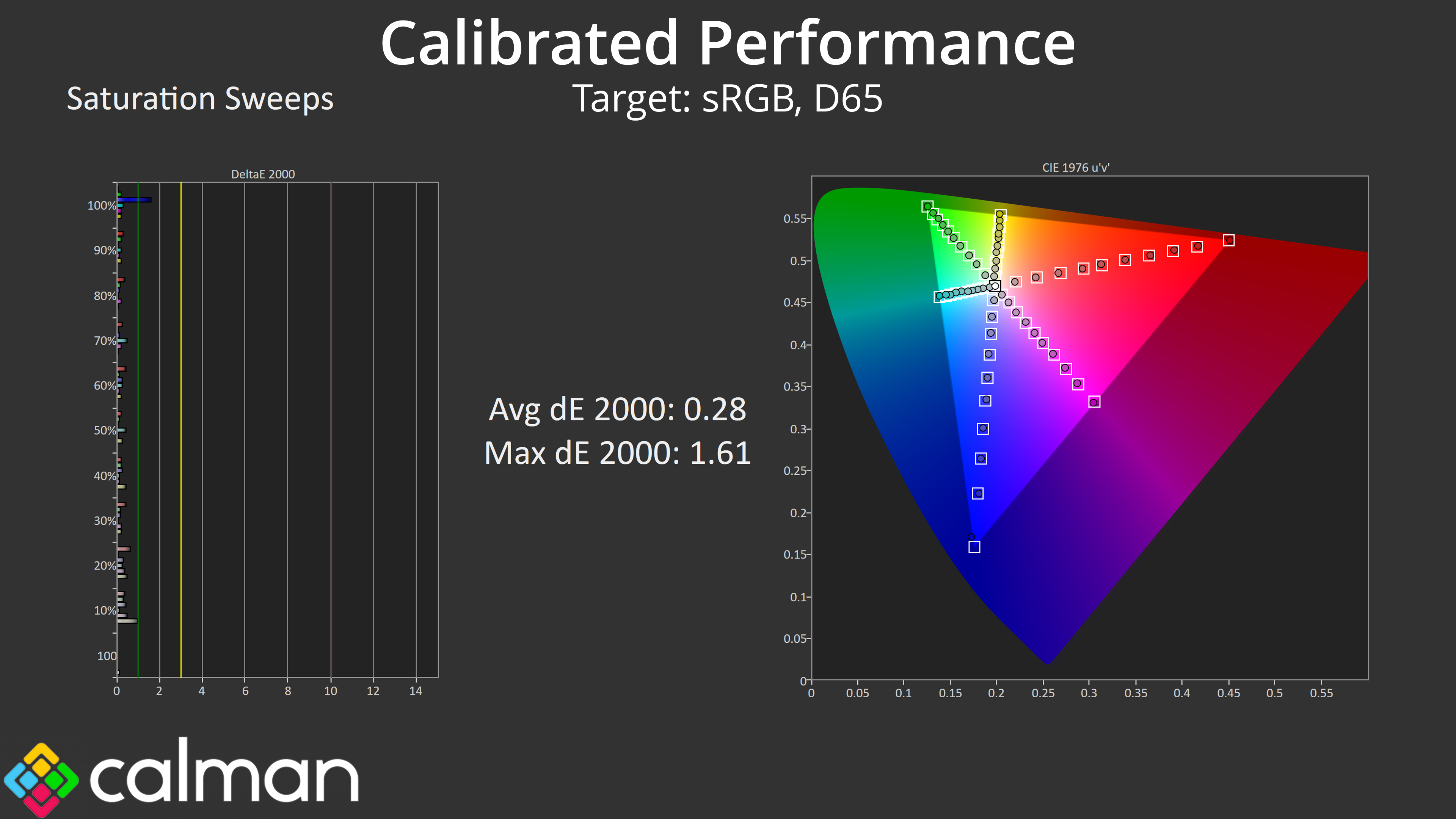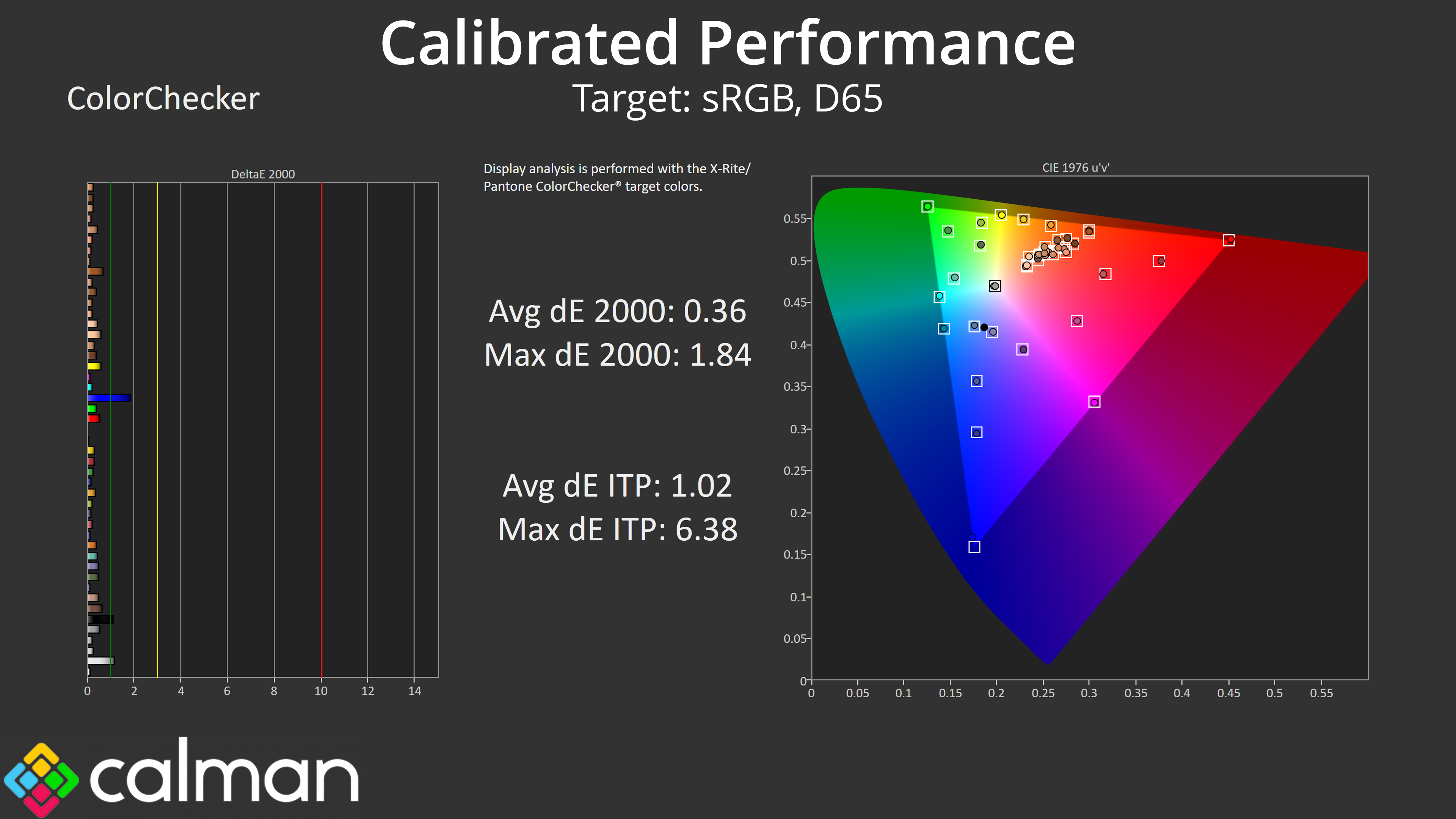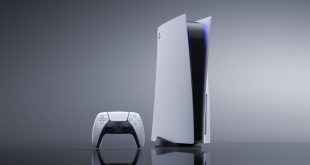Our main test involves using an X-Rite i1 Display Pro Plus colorimeter and utilising Portrait Display's Calman Ultimate software. The device sits on top of the screen while the software generates colour tones and patterns, which it compares against predetermined values to work out how accurate the screen is.
The results show:
- A monitor’s maximum brightness in candelas or cd/m2 at various levels set in the OSD.
- A monitor’s contrast ratio at various brightness levels in the OSD.
- Gamut coverage, primarily focusing on sRGB and DCI-P3 colour spaces.
- Greyscale accuracy, measured across 20 shades, with an average colour balance reported.
- The exact gamma levels, with a comparison against preset settings in the OSD.
- The colour accuracy, expressed as a Delta E ratio, with a result under 3 being fine for normal use, and under 2 being great for colour-accurate design work.
We first run these tests with the display in its out-of-the-box state, with all settings on default. If there is an sRGB emulation option or other useful mode then we may test that too. We then calibrate the screen using the Calman Ultimate software and run the tests again.
You can read more about our test methodology HERE.
Default settings
Brightness and Contrast (Full Screen)
| OSD Brightness | White Luminance (cd/m2) | Black Luminance (cd/m2) | Contrast Ratio |
| 0% | 58.4 | 0.052 | 1128:1 |
| 25% | 156.9 | 0.139 | 1131:1 |
| 50% | 250.7 | 0.221 | 1132:1 |
| 75% | 335.8 | 0.297 | 1132:1 |
| 100% | 395.1 | 0.349 | 1131:1 |
Kicking off our testing with brightness and contrast, things are pretty typical of an LCD here. The minimum brightness of 58 nits isn't super low, but the peak of just below 400 nits is solid. Black levels are also as expected, resulting in contrast of around 1130:1, which is slightly higher than AOC's claimed 1000:1 ratio, but about par for the course for an IPS panel.
Gamut (CIE 1976)
| Colour space | Coverage (%) |
| sRGB | 99.5 |
| DCI-P3 | 95.8 |
| Adobe RGB | 93.4 |
| Rec.2020 | 72.8 |
The U27G4R's gamut is perhaps surprisingly wide, well exceeding the sRGB space and covering 95.8% of DCI-P3, 93.4% of Adobe RGB and then 72.8% reporting for Rec.2020. It's not reaching quantum dot levels, but for a screen at this price point, it's impressively wide.
Greyscale
As for default greyscale performance, the monitor's white balance is very good, averaging 6428K, so no need for any changes there. Gamma is less impressive, being consistently below the 2.2 target, averaging 2.031, resulting in a brighter-than-intended appearance.
I actually found that switching to the Gamma 2.4 setting resulted in a better overall setup – it's still not perfect, but is consistently closer to the 2.2 target and averaging 2.216.
Saturation
Out of the box saturation performance is about as expected considering how wide the gamut is. Relative to the sRGB space we saw an average deltaE 2000 of 3.03, though that does improve to an average of 2.12 when compared against the DCI-P3 space.
Colour Accuracy
It's a very similar story for colour accuracy, too. Relative to sRGB we're looking at an average dE 2000 of 3.36, and then that improves to 2.05 for the DCI-P3 space.
sRGB Emulation Mode
AOC does also includes an sRGB mode within the OSD, but it's not the best I've ever used. It does clamp the gamut to prevent over-saturation, but is actually a bit over-aggressive here, reducing coverage to 92%. On top of that, Gamma tracking is still well off and now cannot be adjusted given the sRGB mode locks down various settings. Both saturation and colour accuracy dE 2000s do improve over stock, hovering around 2-2.5, so they're decent, but it's nothing mind blowing.
Calibrated Results
For the best results, a full calibration is required, with the U27G4R doing incredibly well here – with stellar results across the board and a particularly low average deltaE for colour accuracy. I can't imagine many people will be buying this sort of monitor for colour-sensitive work, but it's good to know what's achievable if you have the tools.
 KitGuru KitGuru.net – Tech News | Hardware News | Hardware Reviews | IOS | Mobile | Gaming | Graphics Cards
KitGuru KitGuru.net – Tech News | Hardware News | Hardware Reviews | IOS | Mobile | Gaming | Graphics Cards


